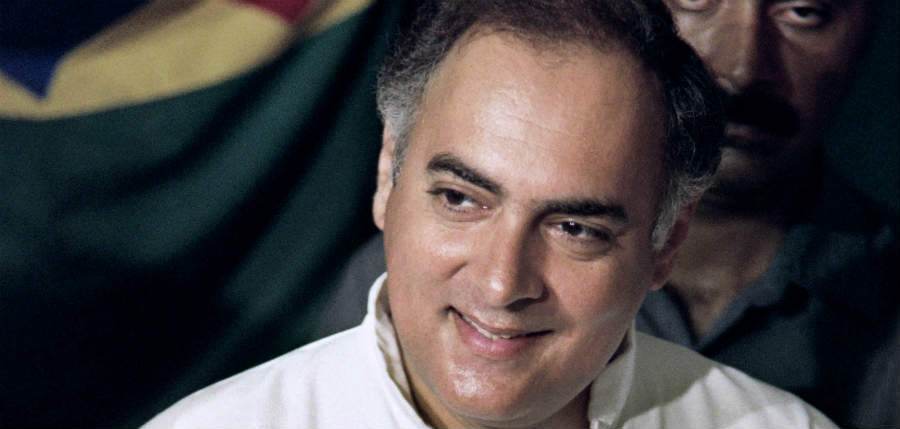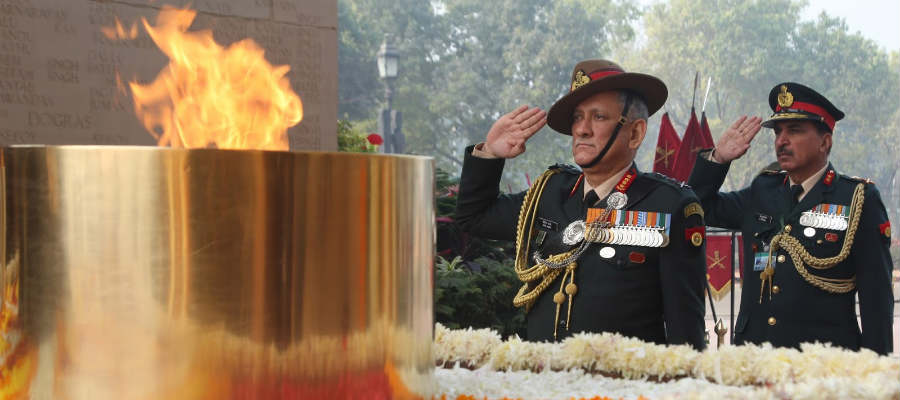India is considered to be a rising force in world affairs today – in terms of its economic and technological might – and one person who will be surely missed at this crucial juncture is late Indian Prime Minister Rajiv Gandhi.
His vision to see India as a technologically-developed nation is taking shape in contemporary times. Rajiv was killed by a Liberation Tigers of Tamil Eelam (LTTE) human bomb at 10.18 pm (IST) on May 21, 1991 in Sriperembudur, Tamil Nadu. The blast killed 18 people, including nine policemen, and 33 others were injured.
But even after 16 years, the perpetrators of this heinous act have not been brought to book and there is no information about who all conspired to get Rajiv killed. On the contrary, the mystery surrounding his assassination has become more confusing.
The Congress Party, to which Rajiv belonged, is running the UPA government with the help of the same parties (DMK, PMK) that are considered as sympathizers of LTTE and are blamed for his assassination.
The interim report of Justice Milap Chand Jain, looking into the conspiracy angle to the assassination, indicted the DMK for colluding with the LTTE. The report concluded that DMK provided sanctuary to the LTTE, which made it easy for the rebels to assassinate Rajiv.
The Commission report stated that the year 1989 signified “the perpetuation of the general political trend of indulging the Tamil militants on Indian soil and tolerance of their wide-ranging criminal and anti-national activities.”
The report also alleged that LTTE leaders in Jaffna were in possession of sensitive coded messages exchanged between the Union government and the state government of DMK.
“There is evidence to show that, during this period, some of the most vital wireless messages were passed between the LTTE operatives based in Tamil Nadu and Jaffna. These messages, which were decoded later, are directly related to the assassination of Rajiv Gandhi,” the report stated.
The Congress subsequently brought down the United Front (UF) government of I K Gujral after the report was leaked in November 1998. The party also demanded the removal of DMK from the UF government, arguing that it had a hand in Rajiv’s killing.
Questions for Congress
Political analysts have raised several questions for this betrayal:
- Why has the Congress aligned with parties who have been open sympathisers of LTTE and were indicted in the Jain Commission report?
- Since the inception of the UPA government, why has there been not a single public demand to extradite LTTE supremo Prabhakaran and his deputy Pottu Amman?
- Why was there no opposition to a woman MP from Tamil Nadu, at whose place one of main conspirator Sivarasan stayed before the assassination, when she was made a minister in the current UPA government?
Sources point out that the Congress party’s total indifference to these vital moral issues is not difficult to understand if one goes into the details of all the investigations that went into the case till now.
After examining the SIT investigation report, Justice Verma Commission report and the Jain Commission report, one can conclude that the Rajiv assassination was not a hit-and-run affair but was a meticulously planned operation that involved actors beyond the LTTE.
Immediately after the assassination, the Chandrasekhar government handed the investigation to CBI on May 24, 1991. The agency created a Special Investigation Team (SIT) under D R Karthikeyan to find who killed Rajiv. The SIT probe confirmed the role of LTTE in the assassination, which was upheld by the Supreme Court of India.
Out of the 26 people who were convicted, four were sentenced to death but they have not been hanged as yet.
Prabhakaran and Pottu Amman, the main accused in the case, were declared “Proclaimed Offenders” for failing to surrender to the court.
Security lapses
The Supreme Court also held that LTTE’s decision of eliminating Rajiv was prompted by his interview to Sunday magazine (August 21-28, 1990), where he said he would send the IPKF to disarm LTTE if he came back to power again.
Rajiv also defended the signing of the Indo-Sri Lanka accord in the same interview. The LTTE decision to kill him was perhaps aimed at preventing him from coming to power again.
Thereafter, the Justice J S Verma Commission was formed to look into the security lapses that led to the killing.
The final report, submitted in June 1992, concluded that the security arrangements for the former PM were adequate but local Congress party leaders disrupted and broke these arrangements.
The Narasimha Rao government initially rejected Verma’s findings but later accepted it under pressure. However, no action was taken on the recommendations of the Commission.
Despite no action, the findings throw up vital questions that have been consistently raised by political analysts. Sources have indicated that Rajiv was time and again informed that there was a threat to his life and that he should not travel to Tamil Nadu.
In fact, then governor of Tamil Nadu Bhism Narayan Singh, broke his official protocol and twice warned Rajiv about the threat to his life if he visited the state.
But Rajiv was prevailed upon by some close circle of party office-bearers (some of them are ministers in the present UPA government) who wanted him to campaign in Tamil Nadu, sources point out.
The LTTE wanted him to come to Tamil Nadu, some state Congress leaders and allies at national level were against his visit, and a close circle of party office-bearers insisted on his visit to the state. Sources point out that this angle should have been investigated by the SIT, but it was not.
Details revealed by Dr Subramanian Swamy in his book, Sri Lanka in Crisis: India’s Options (2007), revealed that an LTTE delegation had met Rajiv Gandhi on March 5, 1991. Another delegation met him around March 14, 1991 at New Delhi.
“Retrospectively, these meetings assumed great significance as they were perceived as a smoke screen deliberately created by the LTTE to lull Shri Rajiv Gandhi into complacency,” the interim report of the Jain Commission stated.
“The message conveyed to Rajiv Gandhi by both these delegations was that there was no threat to his life and that he can travel to Tamil Nadu without fearing for his life,” said veteran journalist and political observer Ram Bahadur Rai.
The aim of these meetings was to lure Rajiv into a trap and make him complacent about his own security by using Congress leaders.
“I did a series of articles after his assassination that pointed out how, after these meetings, Rajiv became complacent about his security and broke security rules in more than 40 rallies,” Rai said.
Dubious commission
Another important observation made by political commentators is that how no Congress leader was killed or seriously injured after the blast. Usually, whenever a national leader (in this case a former PM) travels for an election rally in any state, local and state leaders remain in close proximity. Even this angle was never explored nor investigated.
The questions raised against the Congressmen were never investigated even by Justice M C Jain Commission, set up on August 23, 1991, to inquire into the conspiracy angle of the assassination. The commission was to investigate whether any persons or agencies were involved in the assassination.
Justice Jain submitted a 17-volume interim report on August 28, 1997. The setting up of the Jain Commission was the most unfortunate development for the investigation. According to political analysts, the commission was set up to create more confusion and float dubious conspiracy theories about the assassination.
“The Commission was a part of a conspiracy within the Congress party. The party leaders used the commission to target, settle scores, and finish opponents within the party,” said Rai.
The Commission became an object of mockery as it looked into a number of bizarre conspiracy theories surrounding the assassination. The most notable was the involvement of agencies like Mossad, and CIA in assassinating Rajiv Gandhi in order to destabilise India.
The possible involvement of Sikh extremists, ULFA, Kashmiri militants, and even extremist Sinhala elements and hostile sections of Sri Lankan government was looked into by the Commission.
The Commission also dragged a lot of people like Chandraswami, former PM P V Narasimha Rao, Dr Subramanian Swamy, and many others into the various conspiracy theories.
The final report of the Commission was tabled in Parliament on July 31, 1998. Following this, a Multi-Disciplinary Monitoring Agency (MDMA) was constituted to bring the absconding accused in the assassination case on trial.
The agency has been working for nine years now but they haven’t got anywhere. The Indian public has no idea what the agency is doing. The agency has even failed to make any breakthrough in unraveling the conspiracy behind the former PM’s assassination.
Soft state
The popular belief that Rajiv sent the Indian Peace Keeping Force (IPKF) to Sri Lanka and LTTE chief Prabhakaran got him assassinated to avenge that betrayal is absolutely baseless.
Sending the IPKF to Sri Lanka was not a personal decision of Rajiv. It was endorsed by the Indian Parliament and hence was a national policy.
So his assassination is a challenge to the sovereignty of India. The person who was killed in the blast at Sriperumbudur was not just a leader of a national party but a former PM of India.
“How can a nation tolerate a foreign terrorist organisation killing a former PM just because they did not agree to his policies,” question political analysts.
But despite these arguments, majority of the political leaders from almost all the parties do not have the desire to seek the truth. Instead, the inquiry commissions have been consistently used to settle political scores.
Considering that 16 years on we have more questions than answers, it gives an impression that anybody can kill an Indian prime minister and get away with murder.


